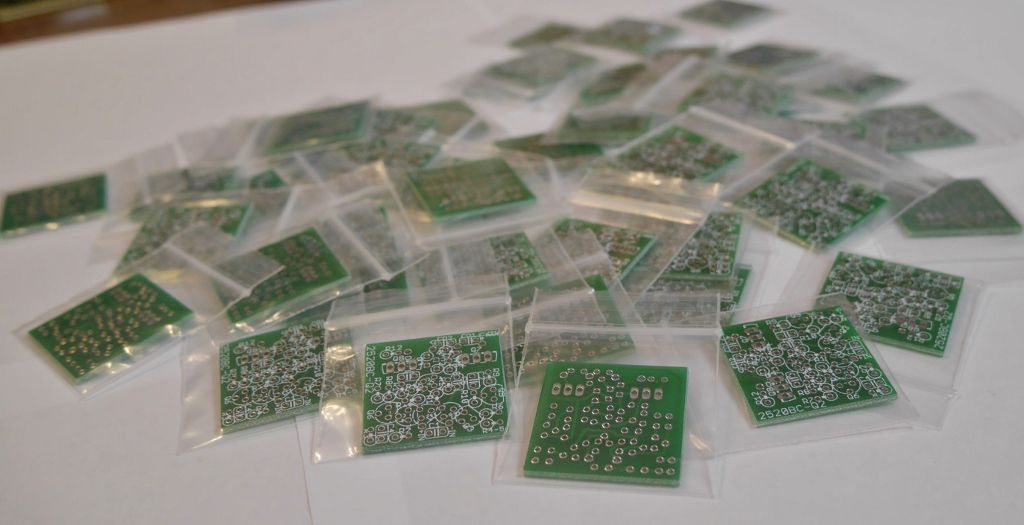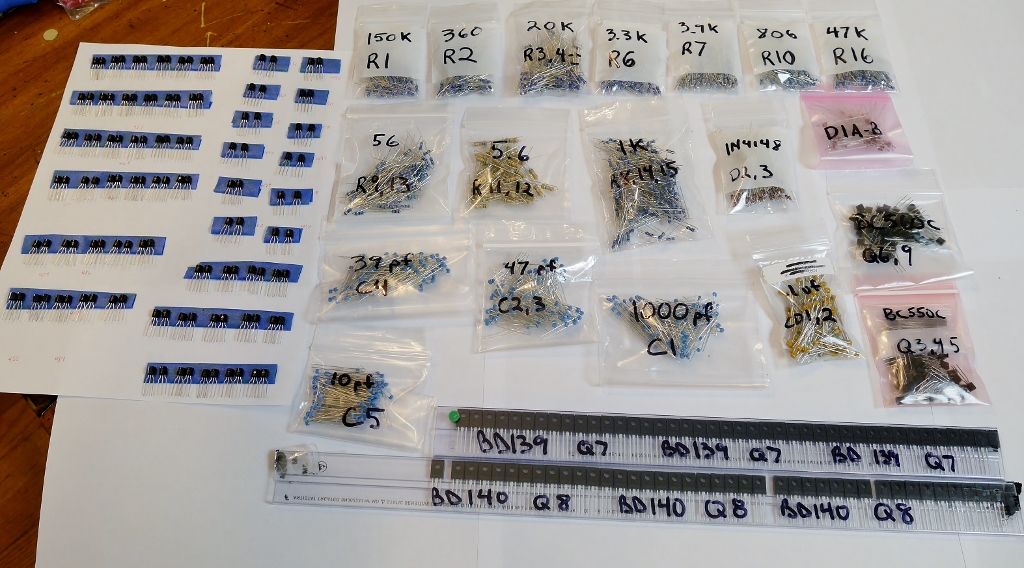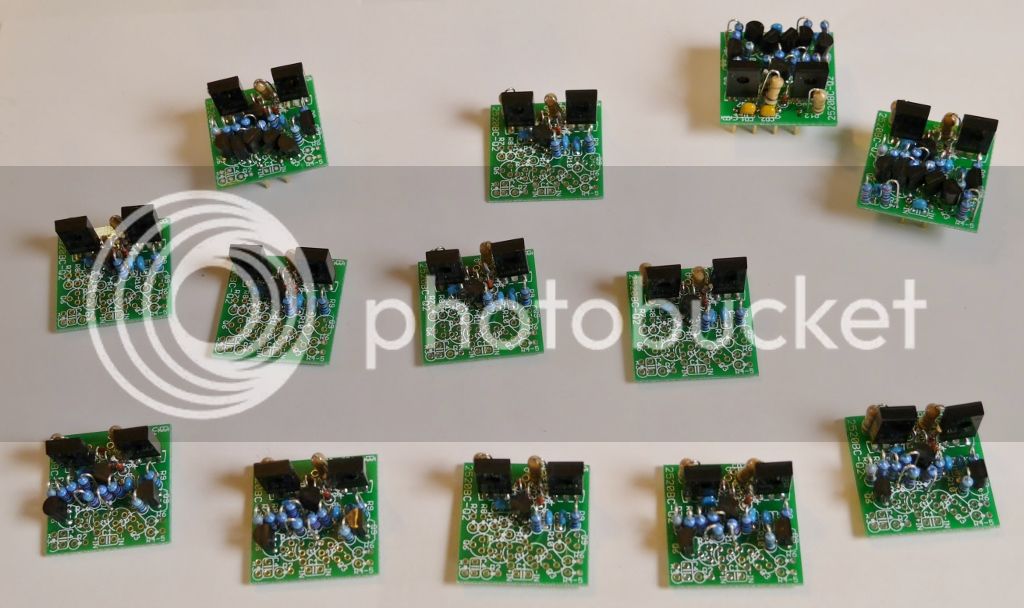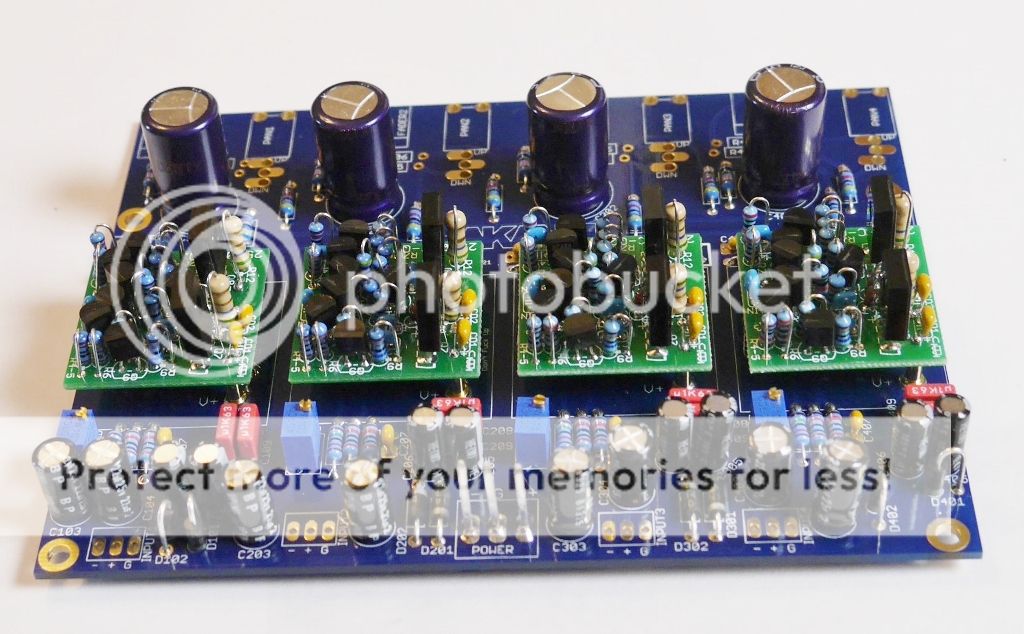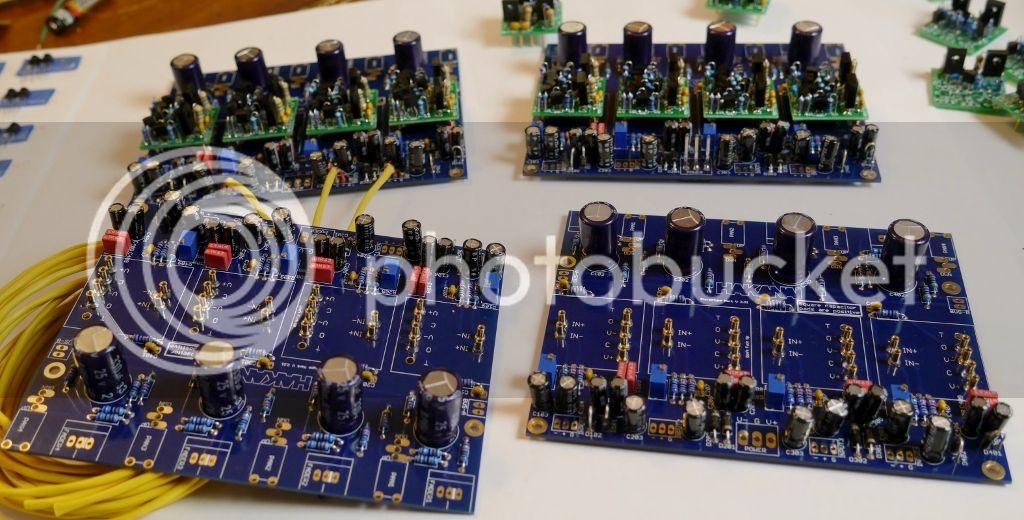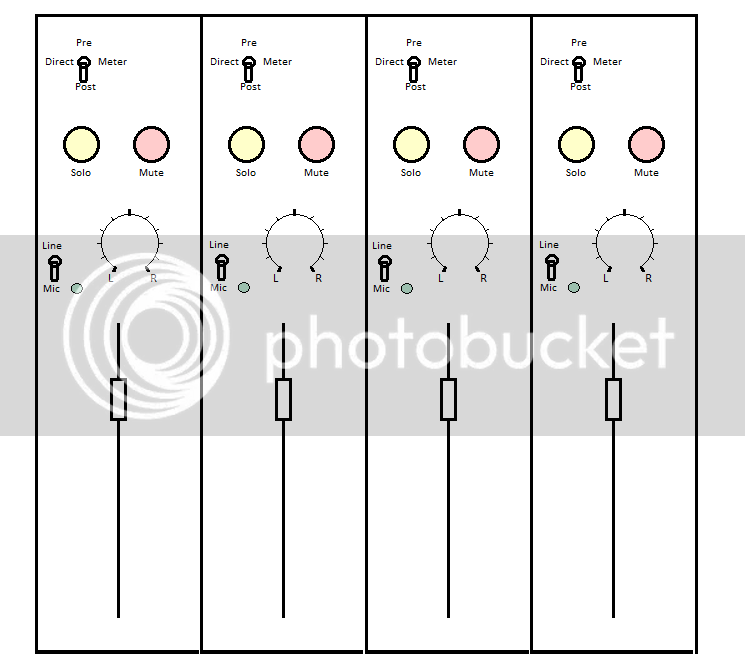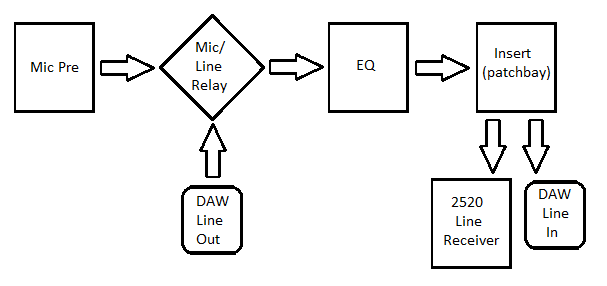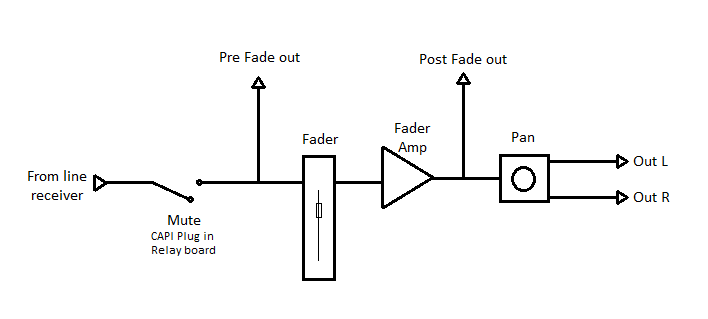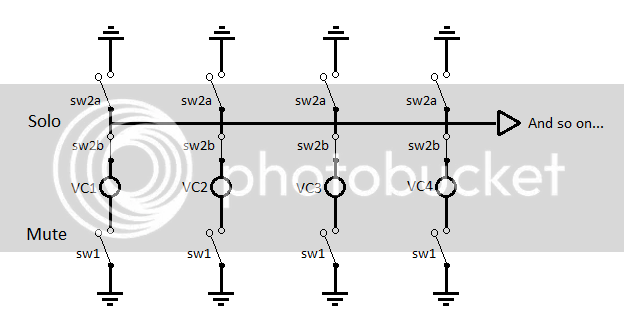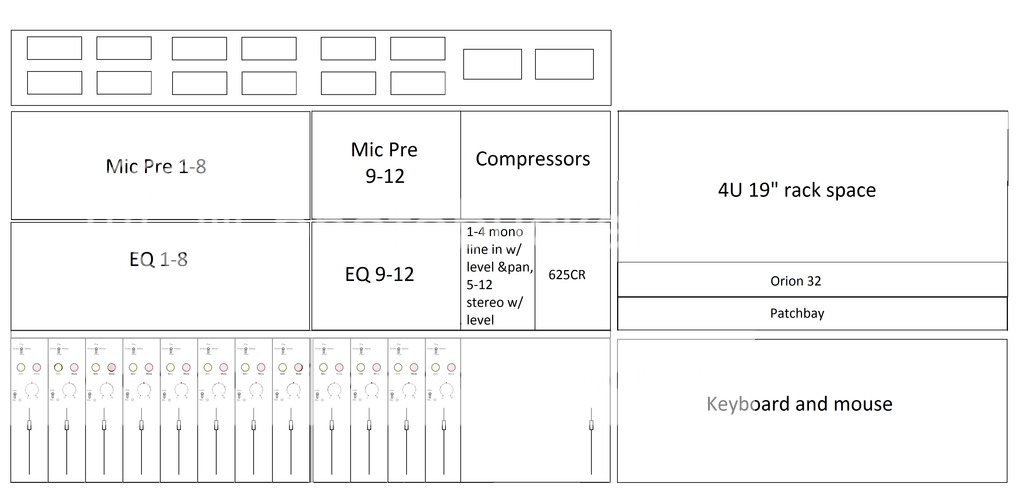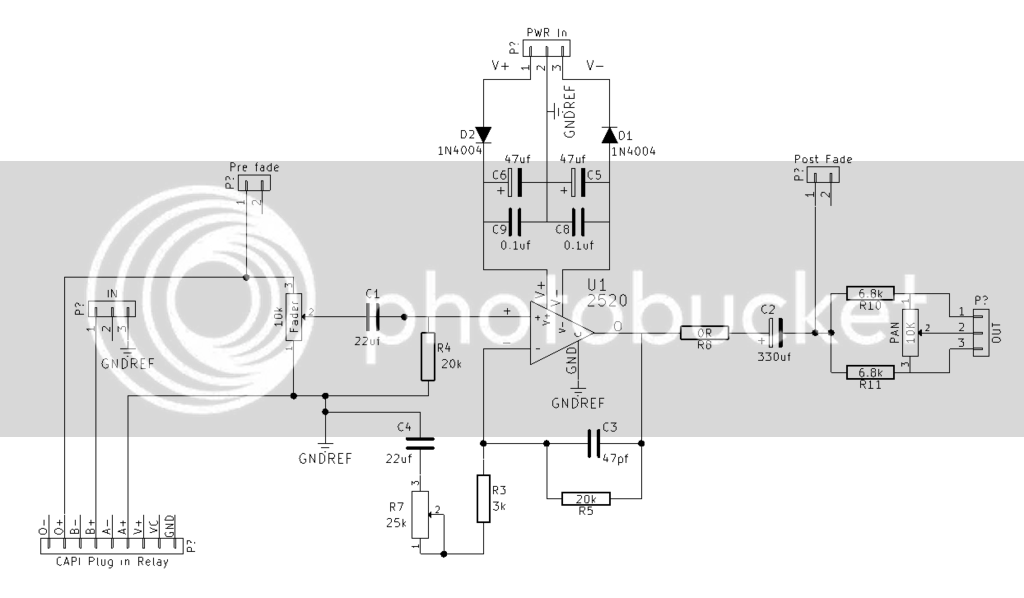So here's where I get confused on output grounding. I think I have it figured out, but I would much rather bounce my understanding off of those with actual knowledge.
On the Classic API site, Jeff states the following re: the input grounding:
With the introduction of the Rev B version of this backplane, all input shield “options” have been removed. All of these shield connections now go directly to the Chassis ground plane.
And output grounding:
"The outputs from the relay PCB and the module slot itself have their shield connections made to the Chassis plane. This is the most common and safest way to handle this connection since it could not be fully user selectable. More often than not, the output cable’s shield will float and make no connection to any ground plane at the output of a 500 series module. Please be advised, I am not recommending to always do this. Each installation will be different."
I've been trying to understand the underlined part. Also, for reference, here is figure 5 from the RANE notes:
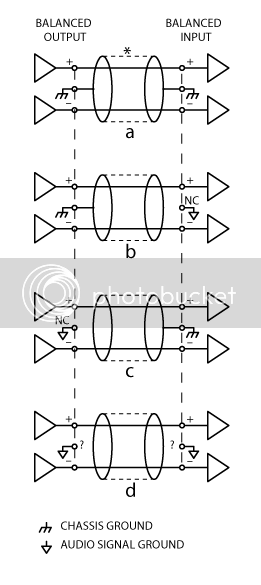
http://www.rane.com/note151.html
For fully balanced, the Rane notes state:
Fully balanced systems (left column in Figure 5) provide the best performance when both ends of the shield connect to units with chassis-grounded shields (Figure 5a). When units with signal-grounded shields are encountered, disconnect the shield at the signal-grounded end (Figures 5b & 5c). This keeps the induced shield currents out of the audio signal ground.
Here starts the rambling part.
Based on my understanding of the Rane notes, if both ends of the connection are chassis grounded, then I would want to connect the ground wire at both ends. So, any connections between 508 backplanes within the console (i.e. mic pre out to eq in), I would want to use the ground, as both connections are chassis grounded.
For connections to other gear, like an A/D converter, DAW interface, external compressor, etc... whether or not to connect the shield would be dependent on the grounding scheme of the interfaced gear. If it's chassis ground, then connect ground at both sides (module slot output and A/D converter input, for example). If one of the two is signal ground instead of chassis ground, then float the ground wire at the signal ground connection.
Do I have that right so far? If so, why float the output cable shield at the output of the 500 series module, since it's a known chassis ground? I realize that is just one option, and Jeff clearly is not saying it's right for everything, but I'm trying to understand what is being accomplished by leaving the module output ground floating.
Hopefully all that made sense, and, once again, many thanks for all help provided.
Thanks,
Keith
On the Classic API site, Jeff states the following re: the input grounding:
With the introduction of the Rev B version of this backplane, all input shield “options” have been removed. All of these shield connections now go directly to the Chassis ground plane.
And output grounding:
"The outputs from the relay PCB and the module slot itself have their shield connections made to the Chassis plane. This is the most common and safest way to handle this connection since it could not be fully user selectable. More often than not, the output cable’s shield will float and make no connection to any ground plane at the output of a 500 series module. Please be advised, I am not recommending to always do this. Each installation will be different."
I've been trying to understand the underlined part. Also, for reference, here is figure 5 from the RANE notes:

http://www.rane.com/note151.html
For fully balanced, the Rane notes state:
Fully balanced systems (left column in Figure 5) provide the best performance when both ends of the shield connect to units with chassis-grounded shields (Figure 5a). When units with signal-grounded shields are encountered, disconnect the shield at the signal-grounded end (Figures 5b & 5c). This keeps the induced shield currents out of the audio signal ground.
Here starts the rambling part.
Based on my understanding of the Rane notes, if both ends of the connection are chassis grounded, then I would want to connect the ground wire at both ends. So, any connections between 508 backplanes within the console (i.e. mic pre out to eq in), I would want to use the ground, as both connections are chassis grounded.
For connections to other gear, like an A/D converter, DAW interface, external compressor, etc... whether or not to connect the shield would be dependent on the grounding scheme of the interfaced gear. If it's chassis ground, then connect ground at both sides (module slot output and A/D converter input, for example). If one of the two is signal ground instead of chassis ground, then float the ground wire at the signal ground connection.
Do I have that right so far? If so, why float the output cable shield at the output of the 500 series module, since it's a known chassis ground? I realize that is just one option, and Jeff clearly is not saying it's right for everything, but I'm trying to understand what is being accomplished by leaving the module output ground floating.
Hopefully all that made sense, and, once again, many thanks for all help provided.
Thanks,
Keith



